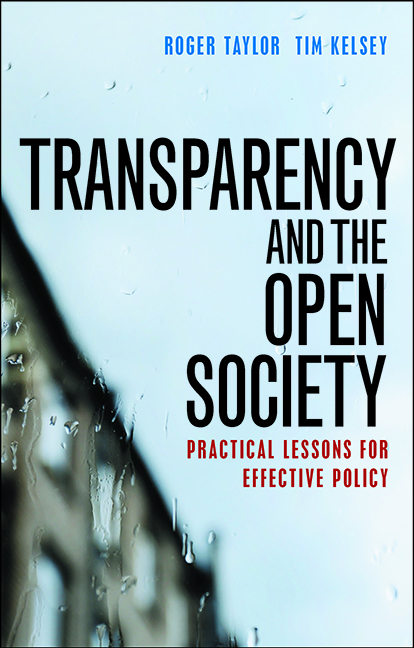14 - Regulation and transparency
Published online by Cambridge University Press: 05 April 2022
Summary
Until now we have looked at ‘negative’ forms of editorial control over information released under transparency initiatives. These include the ability to determine what is recorded; how it is stored, transmitted and deleted; the accuracy and detail of recording; as well as the use of redaction and control over the timing of release. These are all mechanisms that can be used to limit available information.
There is one type of editorial control that takes a different form – the ability to actively use the released information to manage the political narrative. This is most commonly encountered when governments use selective leaking to manage the media, in dispensing ‘scoops’ by way of patronage. In both the US and the UK, the increase in people being prosecuted by the government for unofficial leaks stands in marked contrast to the lack of action on the pervasive use of leaks by the executive branch of government. This has now become a noted abuse of power. In a similar way, public debate can be shaped through the proactive publication of information by government and regulators. This can allow a significant degree of editorial control over such debate by setting the parameters by which public policy is deemed successful or otherwise.
In particular, the publication of performance information about regulated services such as utilities, police services, schools and healthcare has become an important tool in the hands of central government and regulatory agencies in shaping these services and our perception of them.
The publication of this information is cited as an example of increasing transparency. It is often justified on the grounds that such information empowers people by enabling them to choose better performing services or to express their views more effectively as to how services could be improved; or by exposing poorly performing organisations to public shame and condemnation, which then incentivises them to do better.
In Chapter 10 we looked at the degree to which ‘social audit’ – in which the public and media respond to performance information – has been effective in improving standards. However, by our definition of transparency, the publication of regulatory performance information is not necessarily something that evens the playing field between those providing services and those receiving them. Indeed, it could be used to achieve the opposite effect.
- Type
- Chapter
- Information
- Transparency and the Open SocietyPractical Lessons for Effective Policy, pp. 225 - 246Publisher: Bristol University PressPrint publication year: 2016



